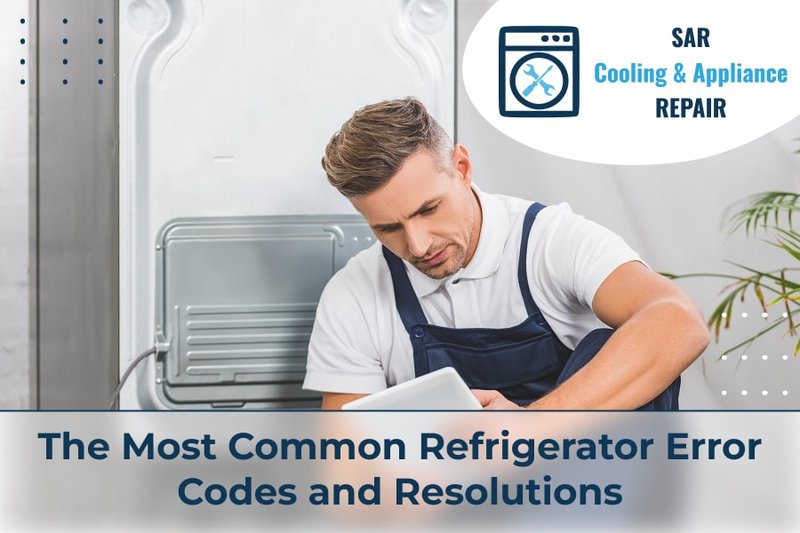
Error codes are a bit like clues. They’re the machine’s way of telling you, “Hey, I’m not feeling too great, you might want to check this out.” Specifically, for Whirlpool refrigerators, an E1 error code is like a friendly nudge. It often indicates a problem with the temperature sensor, which is a critical component for keeping everything chilled just right inside your fridge. But what does it all mean for you? Is it still safe to store your groceries while this code is flashing? Let’s dive into that.
Understanding the E1 Error Code: What’s Going On?
So, the E1 error code has popped up on your Whirlpool refrigerator display, and naturally, you’re curious — maybe even a little worried. Here’s the deal: this code usually signals that there’s an issue with your temperature sensor. Think of the sensor as the thermostat’s little helper. It tells the refrigerator what the current temperature is so it can decide whether to cool things down or just maintain the current chill. Without it working right, your fridge might not know how cold it really is inside. That’s like trying to bake a cake without knowing how hot the oven is!
Now, why does this matter? Well, when the temperature sensor doesn’t function correctly, your fridge may not cool efficiently. It could end up being too cold, freezing your lettuce into a frosty mess, or too warm, turning your milk into a science experiment. Neither of these scenarios is ideal, but they aren’t necessarily dangerous in the short term. Your refrigerator is still fundamentally sound, but it might not perform at its best.
But wait, there’s more! A faulty sensor might not be the only culprit. Sometimes, the error could also be triggered by a poor connection or even a minor glitch in the control board. It’s a bit like when your phone won’t connect to Wi-Fi because it’s just having one of those days. In such cases, a simple fix might involve resetting your fridge or checking connections. Before you rush to call a technician, there are a few things you can try yourself.
Troubleshooting Steps: Simple Fixes You Can Try
Before we call in the experts, let’s talk about some straightforward troubleshooting steps that you can try at home. First up, the classic solution to many a tech problem: a reset. Unplug the refrigerator for about five minutes, then plug it back in. Think of this as rebooting your computer when it’s acting up. This little reset might just clear any temporary glitches causing the E1 error.
Don’t be shy about checking the connections. If you’re comfortable, pull the fridge away from the wall and have a look at the connecting wires. Make sure everything is snug and not wiggling loose. Sometimes, these connections can work themselves out of their positions over time, leading to error codes. If you spot a loose wire, carefully secure it back into place.
If the error persists, it might be time to consider the possibility of a faulty sensor. If you’re handy with a screwdriver and your fridge’s manual, you might be able to inspect the sensor for any visible damage or issues. Of course, not everyone wants to play refrigerator repairperson, and that’s perfectly fine. If these steps seem a bit too daunting or don’t resolve the issue, calling a professional is your next best move.
Preventative Tips: Keeping Your Fridge Error-Free
Now that you’ve got your Whirlpool refrigerator back on track, let’s talk about keeping it that way. Regular maintenance is your best friend. Just like you wouldn’t expect your car to run perfectly without the occasional oil change, your fridge needs a little TLC too. Cleaning the coils twice a year helps it run efficiently. You can find these coils behind or beneath your fridge; just be sure to unplug the unit before you start poking around.
Being mindful about how you store food is another trick. Make sure nothing is blocking the vents inside the refrigerator. These vents allow for the circulation of cool air, ensuring an even temperature throughout the fridge. If you notice frost building up, it might be time to call in a professional, as defrosting issues can lead to further complications, including error codes.
Finally, consider setting reminders for regular checks. These might include ensuring the door seals are clean and tight (no one likes wasting cool air), and that the temperature settings remain consistent. With a little proactive care, that E1 error code should be a rare sight, and your fridge will keep humming along, doing what it does best: keeping your food fresh and your worries at bay.
